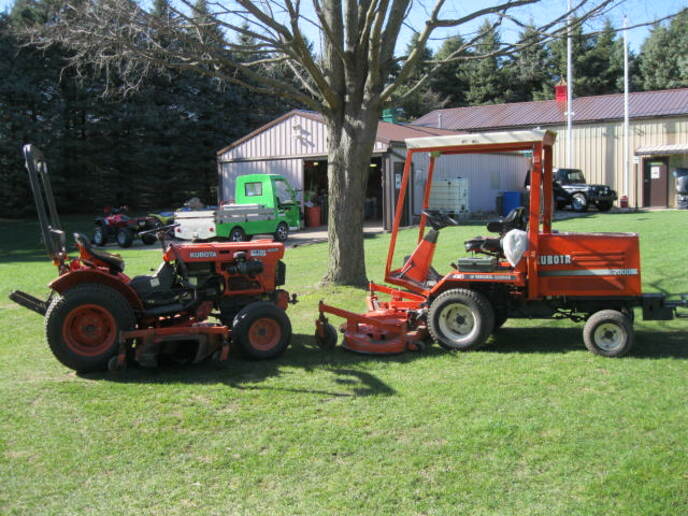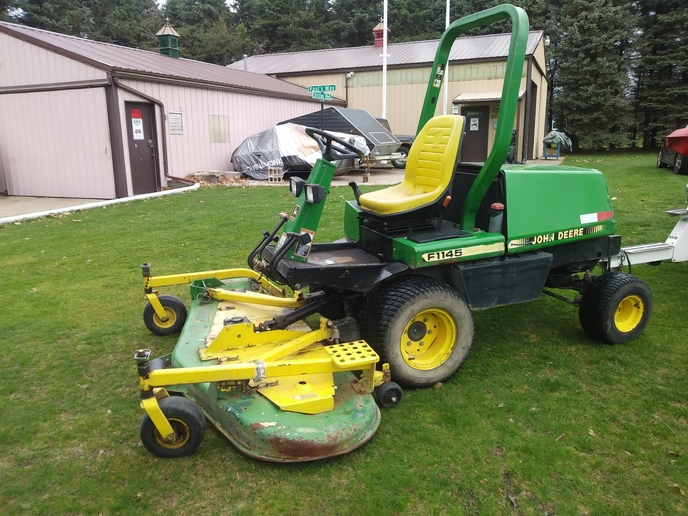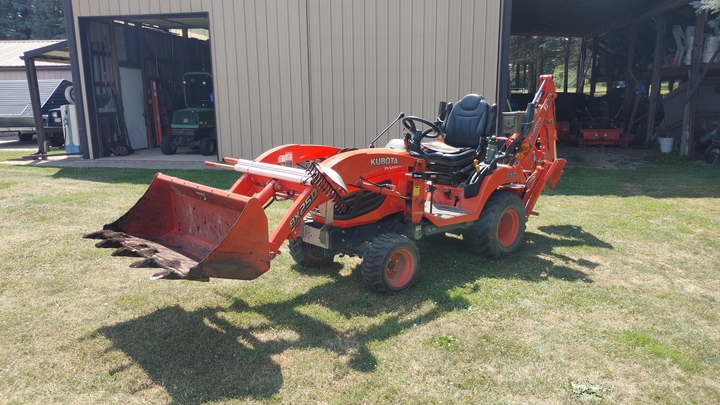You should upgrade or use an alternative browser.
- Thread starter DIM
- Start date
BarnyardEngineering
Well-known Member
- Location
- Rochester, NY
On a gear drive you vary your speed with throttle.
On a hydrostatic drive you want to keep your RPMs toward the higher end of the range to maintain flow and pressure to the transmission.
timcasbolt
Well-known Member
ounds like you're describing my Kubota B7200. In my opinion (for what it's worth) no, running around from here to there under 2000 rpm's won't hurt it at all.(quoted from post at 18:09:24 10/14/22) I'm use to old tractors where 1200 rpm is wide open. I now have new one where 1200 rpm idle. Is 2000 rpm to slow to run tractor. Will it hurt it at 2000 rpm if not under a load. 2500 rpm is speed to get 550 Pto speed. It is 3 cylinder diesel.
flying belgian
Well-known Member
MarkB_MI
Well-known Member
- Location
- Motown USA
rustred
Well-known Member
Blackhole49
Well-known Member
- Location
- White Lake MI



redforlife
Well-known Member
Aside from the hydro trans issue (which I personally don't run into much), I just run the engine throttle according to the work being done.
Engine under a load and lugging down is not a good thing, in my opinion, just because the operator is being to conservative with the throttle. Better to be running a few extra RPM's over what is needed, than consistently and always less than needed.
And yes, newer engines idle at not much less than what older engines would max out at, when it comes to RPM's. But those older engines would also not rev up as fast as the new ones will. They'd fly to pieces if they had that capability.
buickanddeere
Well-known Member
Not saving fuel , engine wear or money by lugging the engine .
showcrop
Well-known Member
(quoted from post at 09:41:28 10/15/22) I'm still having trouble listening to the engine run that fast sounds like it's ready to blow up Another thing I was wondering if the engine runs twice as fast why is it not used twice as much fuel
Almost all diesel engines are controlled by a governor which is controlled by the throttle setting. When the machine takes a load and RPMs dip just a little the governor pulls the rack linkage to increase the amount of fuel being injected, so that the RPMs stay where they are set for.
Geo-TH,In
Well-known Member
All Formula One engines are naturally aspirated V8s with displacements of 2400cc. Engines are restricted to a maximum speed of 18,000 rpm.
Jet engines typically operate in the range of 8,000 RPM to 9,350 RPM (high pressure compressor).
Who would have thunk a F1 engine runs 2X the RPMs of a jet engine?
showcrop
Well-known Member
(quoted from post at 14:48:35 10/15/22) Interesting piece of trivia.
All Formula One engines are naturally aspirated V8s with displacements of 2400cc. Engines are restricted to a maximum speed of 18,000 rpm.
Jet engines typically operate in the range of 8,000 RPM to 9,350 RPM (high pressure compressor).
Who would have thunk a F1 engine runs 2X the RPMs of a jet engine?
The V6 engines were initially limited to 12,000rpm but by 2022 this has been increased to 15,000rpm. At any higher RPMs they were found to be death machines.
Smaller engines typically turn faster.
BarnyardEngineering
Well-known Member
- Location
- Rochester, NY
(quoted from post at 12:05:04 10/15/22)(quoted from post at 09:41:28 10/15/22) I'm still having trouble listening to the engine run that fast sounds like it's ready to blow up Another thing I was wondering if the engine runs twice as fast why is it not used twice as much fuel
Almost all diesel engines are controlled by a governor which is controlled by the throttle setting. When the machine takes a load and RPMs dip just a little the governor pulls the rack linkage to increase the amount of fuel being injected, so that the RPMs stay where they are set for.
Not only that but they are smaller displacement.
Destroked 450
Well-known Member
- Location
- Harned, Ky
I d say it depends on what tractor your use to, I grew up in Ford tractors with 540 pto speeds of 18-1900 rpm, 1000 shaft is 2100.
For tooling around I run them at 15-1700 and have low idle set at 800
Small compact tractors operate at a much higher rpm and need to be reved up to maintain proper fluid flow and pressure for their hydrostatic drives
I wouldn t run it below 2000 when puttering around and when working it take it to pto speed and let it run, that s how they designed it to operate
Similar threads
We sell tractor parts! We have the parts you need to repair your tractor - the right parts. Our low prices and years of research make us your best choice when you need parts. Shop Online Today.
Copyright © 1997-2024 Yesterday's Tractor Co.
All Rights Reserved. Reproduction of any part of this website, including design and content, without written permission is strictly prohibited. Trade Marks and Trade Names contained and used in this Website are those of others, and are used in this Website in a descriptive sense to refer to the products of others. Use of this Web site constitutes acceptance of our User Agreement and Privacy Policy TRADEMARK DISCLAIMER: Tradenames and Trademarks referred to within Yesterday's Tractor Co. products and within the Yesterday's Tractor Co. websites are the property of their respective trademark holders. None of these trademark holders are affiliated with Yesterday's Tractor Co., our products, or our website nor are we sponsored by them. John Deere and its logos are the registered trademarks of the John Deere Corporation. Agco, Agco Allis, White, Massey Ferguson and their logos are the registered trademarks of AGCO Corporation. Case, Case-IH, Farmall, International Harvester, New Holland and their logos are registered trademarks of CNH Global N.V.
Yesterday's Tractors - Antique Tractor Headquarters
Website Accessibility Policy

